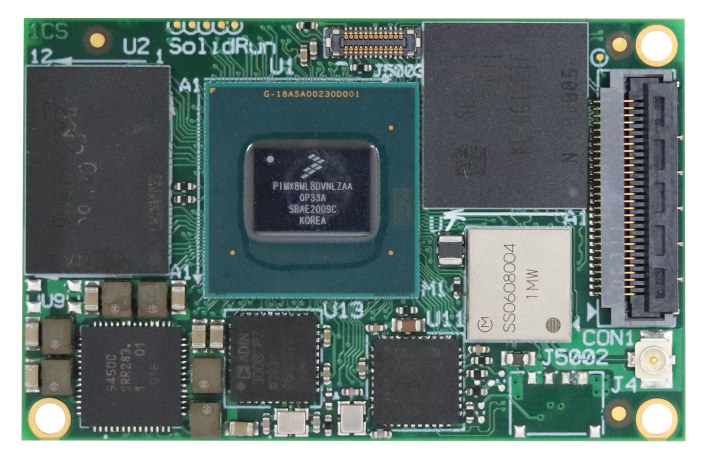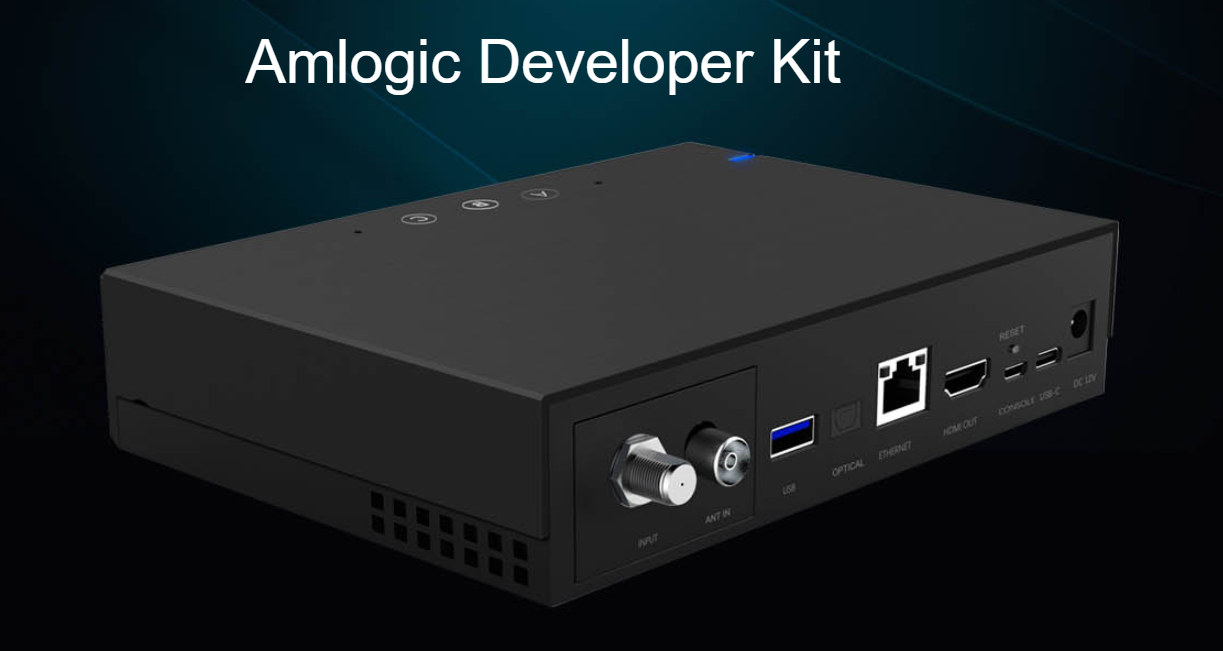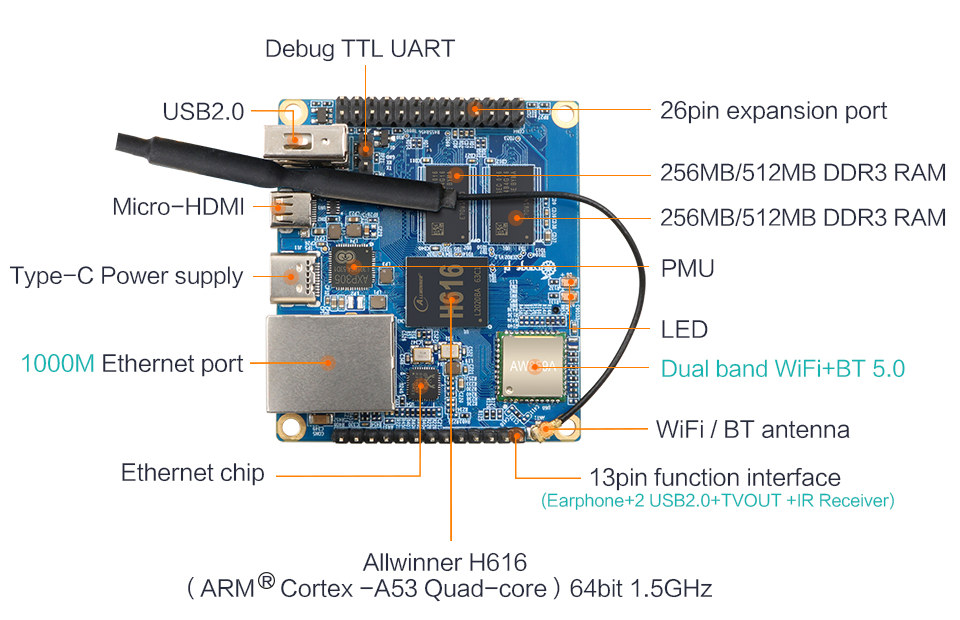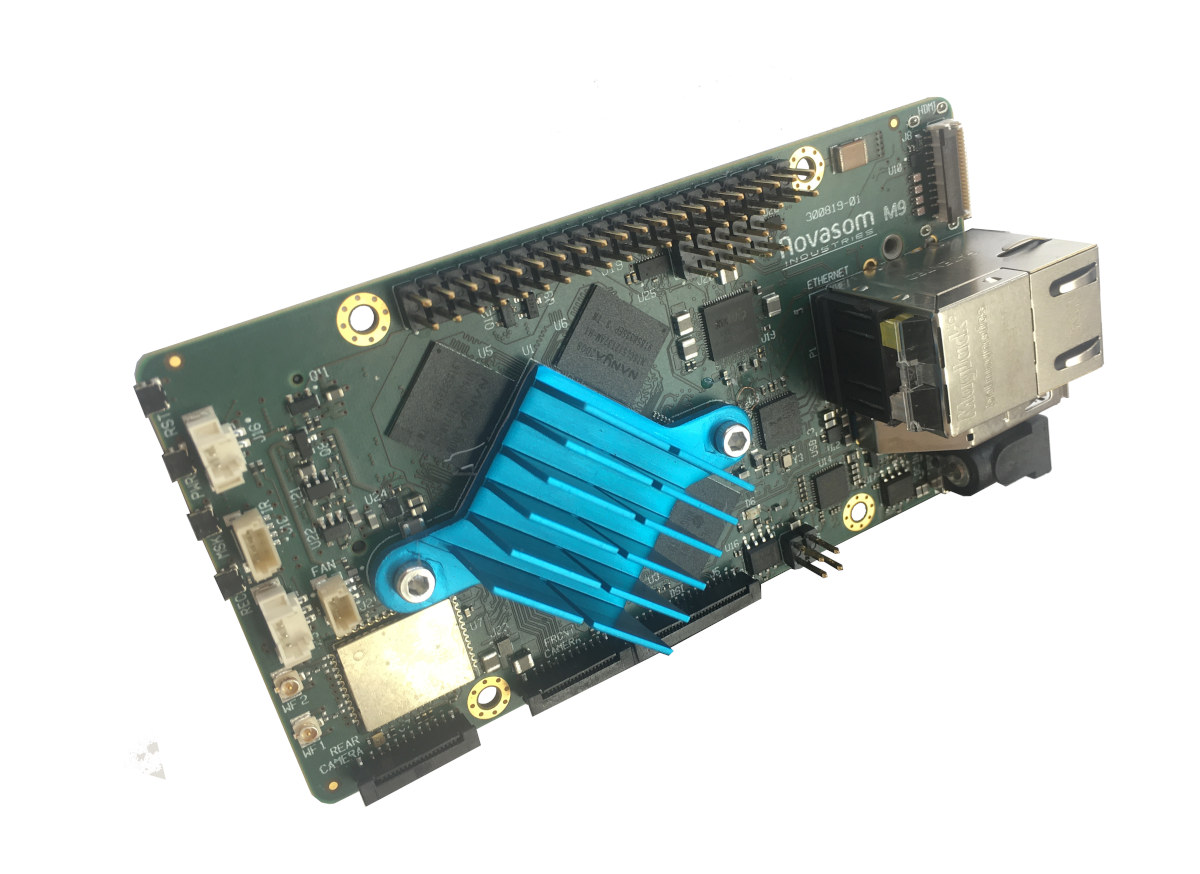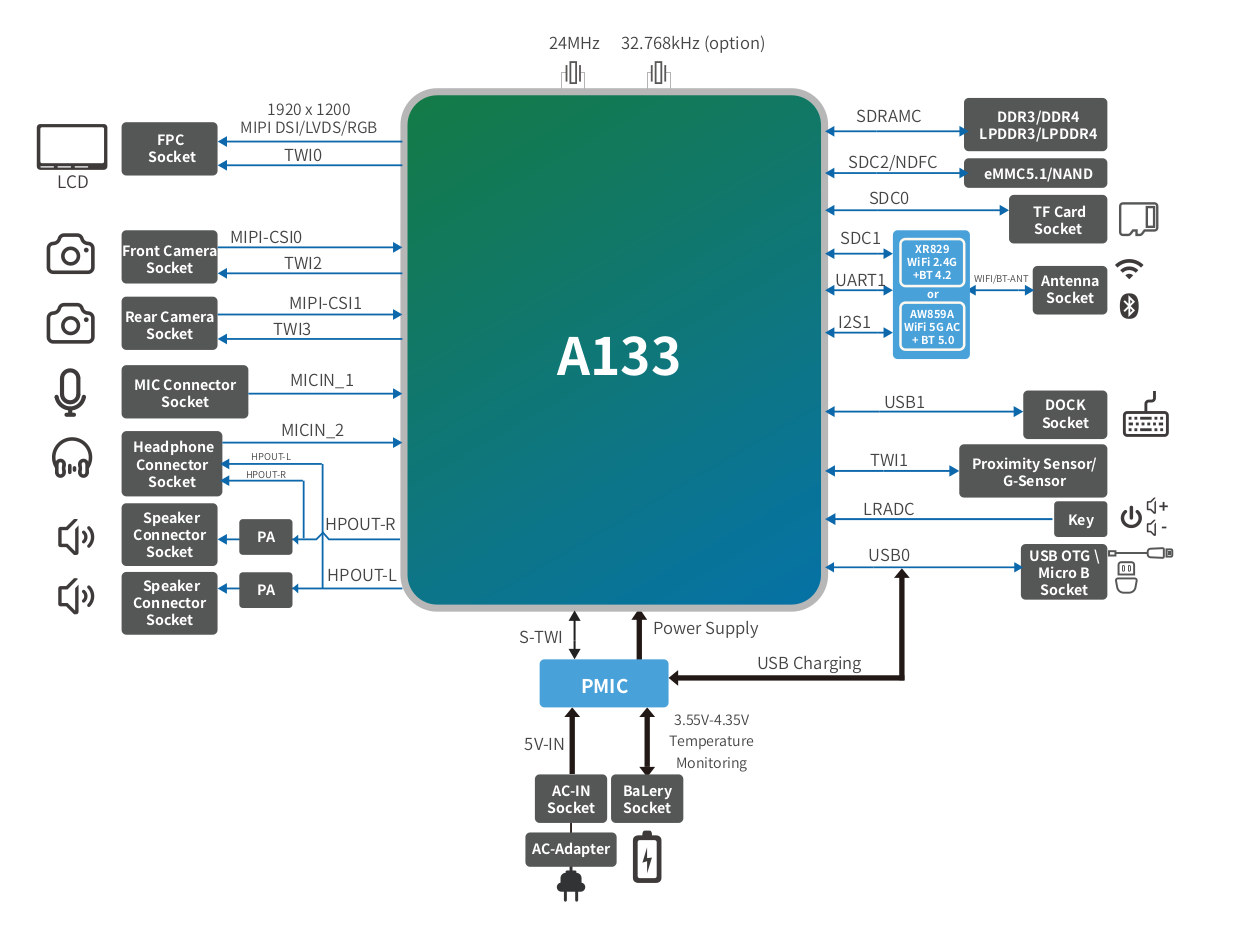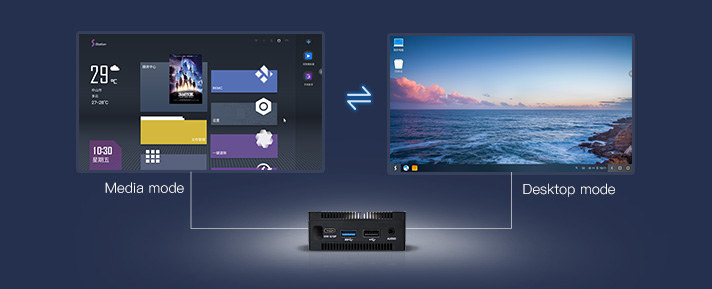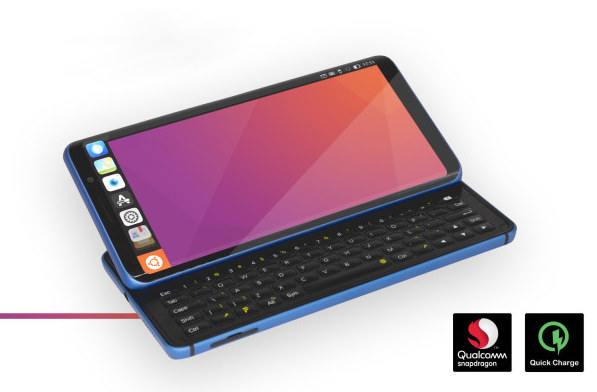SolidRun already offers NXP based solutions with AI accelerators through products such as SolidRun i.MX 8M Mini SoM with Gyrfalcon Lightspeeur 2803S AI accelerator, or Janux GS31 Edge AI server with NXP LX2160A networking SoC, various i.MX 8M SoCs and up to 128 Gyrfalcon accelerators. All those solutions are based on one or more external Gyrfalcon AI chips, but earlier this year, NXP introduced i.MX 8M Plus SoC with a built-in 2.3 TOPS neural processing unit (NPU), and now SolidRun has just unveiled the SolidRun i.MX 8M Plus SoM with the processor together with development kits based on HummingBoard carrier boards. Specifications: SoC – NXP i.MX 8M Plus Dual or Quad with dual or quad-core Arm Cortex-A53 processor @1.6 GHz (industrial) / 1.8 GHz (commercial), with Arm Cortex-M7 up to 800MHz, Vivante GC7000UL 3G GPU (Vulkan, OpenGL ES 3.1, OpenCL 1.2), 2.3 TOPS NPU, 1080p60 H.264/H.265 video encoder, 1080p60 video […]
CarDongle replaces Android Auto with an Android 9.0 USB computer (Crowdfunding)
[Update Feb 16, 2021: CarDongle used to be called CarDroid, but the company had to change the product name. The rest of the post still uses CarDroid] Many cars now sell with Android Auto support but infotainment systems compatible with Google’s mobile app may have limitations and that’s why we have started to see third-party solutions such as AAWireless adapter to enable wireless Android Auto on more cars. Since Android Auto compatible hardware can’t be easily or cheaply upgraded, CarDroid Innovations has introduced CarDroid USB computer that works with Android Auto but instead runs Android 9.0 on a quad or octa-core Cortex-A53 processor clocked at up to 2.0 GHz with improved performance and access to more apps. CarDroid specifications: SoC – Unnamed quad or octa-core Cortex-A53 processor @ 2.0 GHz (Likely Amlogic S912 octa-core processor, advertised at 2.0 GHz, but whose real max frequency is 1.5 GHz, and maybe Amlogic […]
Amlogic S905X4 Android TV & RDK developer kit ships with ATSC, DVB, or ISDB tuners
SEI Robotics has launched an Amlogic S905X4 developer kit for Android TV & RDK development under their DroidLogic brand. The devkit looks like a standard TV box, and the company also provides a choice of tuners with DVB-S2, DVB-T2/C, DVB-S2+DVB-T2/C Combo, ISTB-T, or ATSC-T. We were expecting Amlogic S905X4 TV boxes with products like Ugoos X4 or Mecool KM6 by the end of last month, but due to supply issues manufacturing has been delayed. So SEI Robotics could be a good device to get started with your own project as soon as possible, for example, to work on AV1 hardware decoding implementation. DroidLogic Amlogic S905X4 developer kit specifications: SoC – Amlogic S905X4 quad-core Cortex-A55 processor with Arm Mali-G31MP2 GPU (Amlogic S905X3 as option) System Memory – 2GB DDR4 Storage – 8GB eMMC flash Video Output – HDMI 2.1 up to 4Kp60 with CEC, HDR, and HDCP 2.2 support; CVBS (composite […]
Orange Pi Zero2 Allwinner H616 SBC runs Android 10 or Linux
Last year, Shenzhen Xunlong Software unveiled Orange Pi Zero2 SBC as an update to the popular Orange Pi Zero board with a faster Allwinner H6 processor, HDMI 2.0 video output, USB 3.0 port, Gigabit Ethernet, and WiFi. Just one little problem: AFAIK they never sold it. But Orange Pi Zero2 board is now back with another design features instead equipped with a newer Allwinner H616 processor supporting Android 10, and various Linux distributions such as Ubuntu and Debian. Orange Pi Zero2 (2020) specifications: SoC – Allwinner H616 quad-core Arm Cortex-A53 processor @ up to 1.5 GHz with Arm Mali G31 MP2 GPU with support for OpenGL ES 3.2 and OpenCL 2.0 Memory – 512MB or 1GB DDR3 Storage – 2MB SPI flash and MicroSD card slot Video Output Micro HDMI 2.0a port up to 4Kp60 Video composite (CVBS) via 13-pin header (See Expansion section) Video Decoding 10-bit H265/HEVC up tp […]
Novasom M9 RK3399(K) SBC offers DSI, eDP and HDMI display interfaces, M.2 SSD storage
We’ve previously seen compact Rockchip RK3399 powered single board computer with support for dual displays with the likes of Rock Pi 4 and NanoPi M4B thanks to HDMI and MIPI DSI interfaces. Novasom M9 is another compact RK3399 SBC with both HDMI and MIPI DSI, as well as DisplayPort or embedded DisplayPort (eDP) for a wider choice of display interfaces, although as I understand it is still limited to dual independent display configurations. Another differentiating feature is the option for a wider -20 to +85°C operating temperature meaning it can be equipped with Rockchip RK3399K processor instead of RK3399, and the board also happens to come with an M.2 socket for NVMe SSDs just like Rock Pi 4 board. SBC-M9 board specifications: SoC – Rockchip RK3399 or RK3399K hexa-core processor with two Cortex A72 cores, four Cortex-A53 core, Arm Mali-T860MP4 GPU System Memory – LPDDR3 up to 4GB @ 64bit […]
Allwinner A133 tablet processor pairs with XR829 or AW859A WiFi & Bluetooth chip
Last year, Allwinner published an updated roadmap for tablet processors that included A100, A200, and A300 SoC’s. None of those have been launched yet, but I’ve just noticed the Allwinner A133 quad-core Cortex-A53 processor showed up on the company’s website. That’s yet another entry-level processor coupled with a PowerVR GE8300 GPU, but you’d get support for Android 10, instead of the older Android 7.1/8.1 SDK provided for the earlier Allwinner A-series tablet processors. This time around, the company also pairs A133 processor with its own wireless chips, either XR829 WiFI 4 and Bluetooth 4.2 chip, or AW859A dual-band 802.11ac WiFi 5 and Bluetooth 5 chip. Allwinner A133 specifications: CPU – Quad-core Arm Cortex-A53 @ 1.6GHz with 32KB L1 I-cache + 32KB L1 D-cache per core, 512KB L2 cache, and CoolFlex power management architecture GPU – Imagination PowerVR GE8300 with support for OpenGL ES3.2, Vulkan 1.1, OpenCL 1.2 Memory I/F – […]
Station P1 & M1 fanless mini PCs run media or desktop-optimized Android OS
T-Chip has recently introduced two fanless “Geek” mini PCs under their Firefly brand with Station P1 & M1 respectively powered by Rockchip RK3399 hexa-core processor, and RK3328 quad-core processor. Both mini PCs can run Firefly’s Station OS in either desktop or media mode, as well as Android or Ubuntu. There are also some community efforts to port Armbian and LibreELEC to the devices. Station P1 specifications Specifications: SoC – Rockchip RK3399 hexa-core processor with two Cortex A72 cores @ up to 1.8 GHz and four Cortex-A53 cores, Mali-T860 MP4 GPU with support for OpenGL ES1.1/2.0/3.0/3.1, OpenVG1.1, OpenCL, DX11, VPU with support for 4K H.265 10-bit 60fps video decoding, multi-channel 1080p video decoding and encoding System Memory – 4GB LPDDR4 dual-channel 64-bit RAM Storage – 32GB eMMC flash (16GB/64GB/128GB Optional), onboard 16MB SPI flash, MicroSD card slot Video Output HDMI 2.0a up to 4Kp60, HDCP 1.4/2.2 DisplayPort 1.2 up to 4Kp60 […]
F(x)tec Pro1 X smartphone runs LineageOS or Ubuntu, features a sliding keyboard (Crowdfunding)
F(x)tec Pro1 Android smartphone was introduced last year with the main differentiating features being its sliding keyboard. The company also mentioned support for Android-based LineageOS as well as Sailfish OS, but those need(ed) to be installed by the user. FX Technology has now unveiled F(x)tec Pro1 X smartphone with similar specs, except for the blue case and the option of having additional memory and storage, as well as official support for LineageOS and Ubuntu Touch thanks to a collaboration with XDA. Another difference is the availability of Scandinavian and AZERTY keyboard layouts F(x)tec Pro1 X specifications: SoC – Qualcomm Snapdragon 835 (MSM8998) octa-core Kryo 280 processor with 4x higher performance cores @ 2.45 GHz, 4x low-power cores @ 1.9 GHz, Adreno 540 GPU System Memory – 6GB or 8GB LPDDR4 Storage – 128GB or 256GB flash, MicroSD card up to 2TB Display – 5.99-inch 2160 x 1080 (FHD+) AMOLED display with […]


